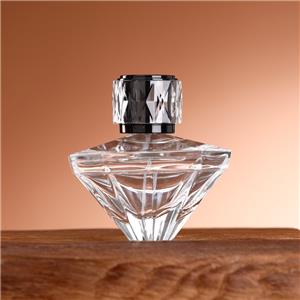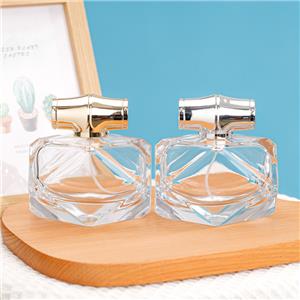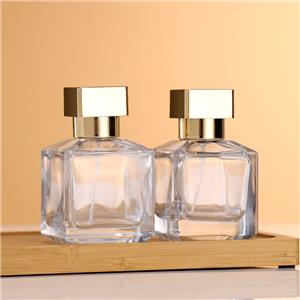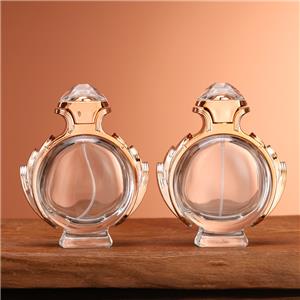Técnicas de decoración de frascos de perfume explicadas
Introduction
A perfume bottle is more than just packaging—it’s a reflection of a brand’s identity and the fragrance inside. Decoration techniques play a crucial role in enhancing the aesthetic appeal, creating uniqueness, and attracting consumers. Understanding the different **perfume bottle decoration techniques** can help brands make informed decisions when customizing their packaging.
1. Screen Printing
* **Process**: Ink is applied directly onto the glass through a fine mesh screen.
* **Advantages**:
* Durable and scratch-resistant.
* Suitable for simple logos, text, and line art.
* **Best For**: Minimalist and elegant branding with clear graphics.
2. Hot Stamping (Foil Stamping)
* **Process**: Metallic or colored foil is transferred onto the bottle using heat and pressure.
* **Advantages**:
* Adds a premium, luxurious look.
* Available in gold, silver, and holographic effects.
* **Best For**: Highlighting logos, borders, and decorative accents.
3. Frosting (Acid Etching or Sandblasting)
* **Process**: The surface of the glass is chemically or mechanically treated to create a matte finish.
* **Advantages**:
* Creates a soft, elegant look.
* Improves grip and adds a premium feel.
* **Best For**: High-end perfumes that want a subtle, sophisticated style.
4. Spray Coating (Color Coating)
* **Process**: A thin layer of colored paint is sprayed onto the glass surface.
* **Advantages**:
* Wide range of colors and gradients available.
* Can achieve glossy, matte, or metallic effects.
* **Best For**: Brands that want eye-catching, colorful packaging.
5. UV Coating
* **Process**: A UV-curable coating is applied and hardened with ultraviolet light.
* **Advantages**:
* Provides a shiny, durable finish.
* Enhances color vibrancy and scratch resistance.
* **Best For**: Decorative effects that require high gloss and durability.
6. Decals and Transfer Printing
* **Process**: Pre-printed images or patterns are transferred onto the bottle surface.
* **Advantages**:
* Allows for complex designs, images, or multi-color artwork.
* Flexible and cost-effective for small orders.
* **Best For**: Niche brands with creative, detailed artwork.
7. Electroplating (Metallization)
Process: A thin metallic layer is deposited on the surface, giving a shiny mirror effect.
Advantages:
* Creates a luxurious, metallic finish.
* Available in gold, silver, rose gold, or chrome.
Best For: Premium products aiming for a high-gloss, glamorous appearance.
8. Embossing and Engraving
Process: The glass surface is raised (embossed) or carved (engraved) with a custom design.
Advantages:
* Permanent and highly durable decoration.
* Creates a tactile experience that enhances brand recognition.
* **Best For**: Signature logos, monograms, or luxury branding
Conclusion
Perfume bottle decoration techniques allow brands to **differentiate themselves, build identity, and increase market appeal**.
* **Screen printing & hot stamping** emphasize logos.
* **Frosting & spray coating** create visual elegance.
* **Decals & UV coating** support creativity and durability.
* **Electroplating & embossing** highlight luxury branding.
✅ By selecting the right decoration technique—or combining several methods—brands can create packaging that not only protects the fragrance but also tells a unique brand story.




